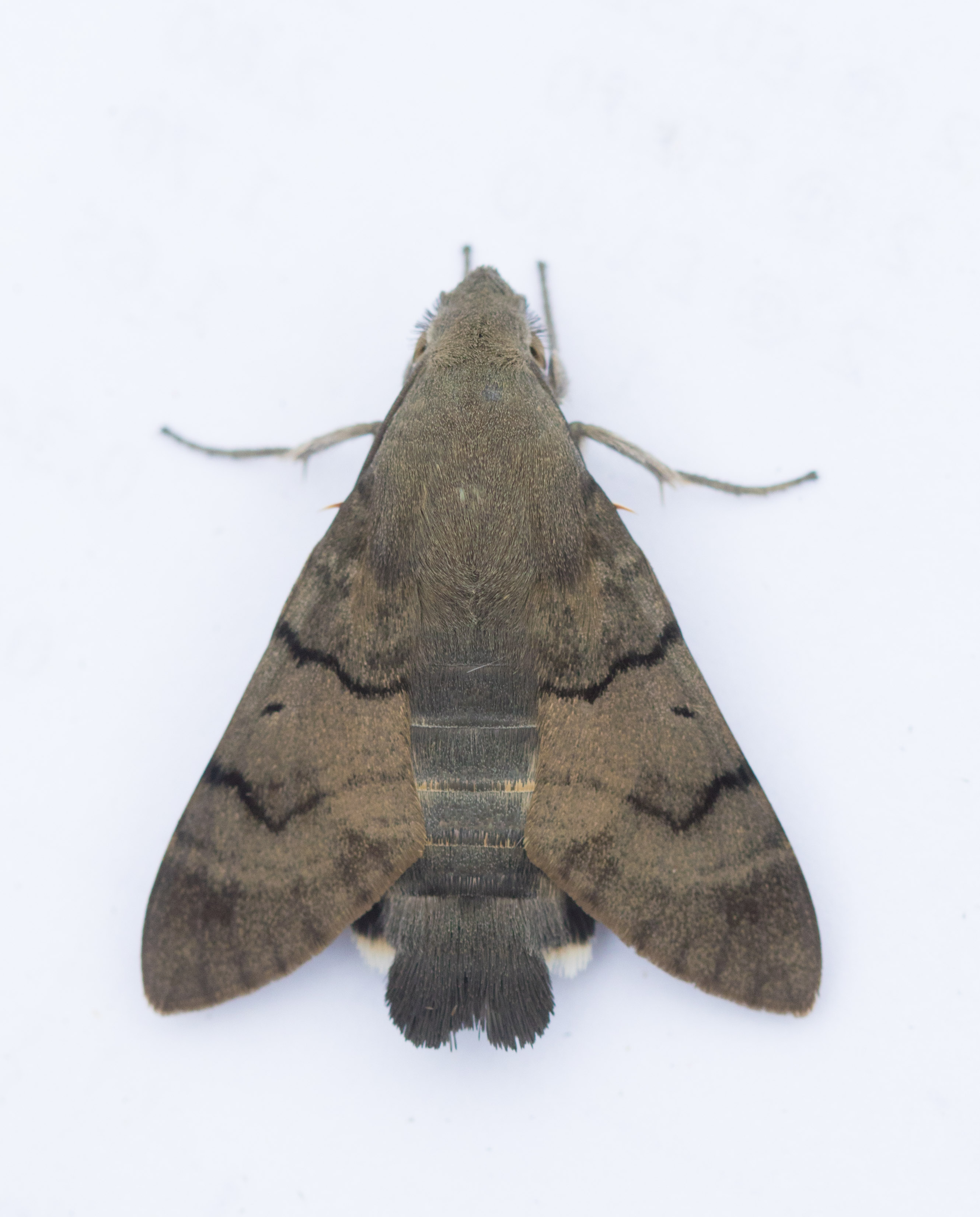
We took the moth trap on our family holiday to coastal South Devon in late August. We were staying on the side of a hill, backed by deciduous woodland, but with open coastal habitat nearby. We caught a decent selection of species, as far as our relative inexperience allows us to tell, though conditions were a bit cool and windy to be ideal. Above, always a favourite, Burnished Brass. This individual left some gold dust on my daughter’s finger. Below, Poplar Hawk Moths were frequent.
Above, always a favourite, Burnished Brass. This individual left some gold dust on my daughter’s finger. Below, Poplar Hawk Moths were frequent. 

Hawk Moths are always a great way to engage children, our nieces loved seeing them. 
 Above, our first Marbled Green. Below, the spectacular Jersey Tiger. We saw a few of these day-flying moths locally (photo by our eldest daughter):
Above, our first Marbled Green. Below, the spectacular Jersey Tiger. We saw a few of these day-flying moths locally (photo by our eldest daughter): 
Below, Black Arches: fantastic antennae! 

Above, a Yellow-tail from the only angle you that can see the tail. Below, the wonderfully named Blood Vein (photo by our eldest daughter): 
 Above, the common Lesser Broad-bordered Yellow Underwing. Long name, great eyes. There were also Four-spotted Footman and Rosy Footman (below):
Above, the common Lesser Broad-bordered Yellow Underwing. Long name, great eyes. There were also Four-spotted Footman and Rosy Footman (below): 
Each trap also attracted many Shield Bugs, much our daughter’s delight: 
Hummingbird Hawk Moths were very common. A Buddleia bush behind the house usually had a couple buzzing around feeding and we came across them in the village and even on the cliffs above the beach. 
One afternoon our youngest daughter came running to us with some news:
“Daddy, there is a Hummingbird Hawkmoth INSIDE THE HOUSE!” exclaimed my 6 year old. And there was. A fantastic opportunity to study this agile species up close, (check out those pupils), before a safe release 👍🏻@BritishMoths @savebutterflies @BCDevon @UpperThamesBC pic.twitter.com/QSG6pGL8lf
— Tom Bedford (@TomBedford12) August 22, 2018
A Hummingbird Hawk Moth had flown through an open window into the house. After much flying up against the windows it finally rested and I caught it in a glass and took it outside. I can’t recall ever seeing this species at rest before. The folded wings completely cover the orange hind-wing and the tail covers the black and white lower thorax. I slipped a piece of white paper under the jar to create a clean back ground for these pictures:




A further treat was bumping into a moth expert. Janet Cheney has just stepped down from being a regional coordinator for UK moth records. She was delighted that we had an interest in moths and kindly offered to come over on our last night and set up her mercury vapour (MV) bulb and moth trap on our patio. These bulbs are seriously bright: 
Below, a view of the village at night: on the far left, the moon; on the far right Janet’s MV bulb, clearly illuminating the surrounding trees and appearing brighter than the moon! The bulb’s reflection is also visible in the sea, bottom right: 
Janet came over the following morning and talked us though our catch. The cold, windy conditions were far from ideal for mothing, but Janet’s expertise and enthusiasm were inspiring. 
Below, Oak Eggar:
Yet another reminder that whilst the wildlife may be the focus of our interest, it is the great people that you meet and learn from along the way the way that is the real pleasure of the journey.
